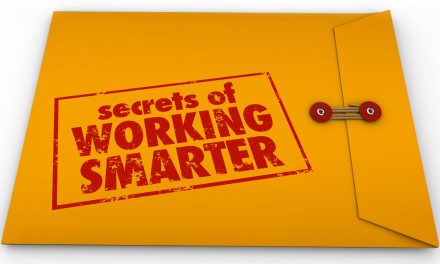I confess that I was surprised to see NIC bring in someone as polarizing as Paul Ryan to be the kick-off keynote speaker at the NIC Spring Conference in San Diego.
By Steve Moran
I confess that I was surprised to see NIC bring in someone as polarizing as Paul Ryan to be the kick-off keynote speaker at the NIC Spring Conference in San Diego. I was very curious about what he would have to say and how — in this atmosphere of having to hate the other political side — he would go over.
It was clear I was not the only person who was curious. I find the 8 A.M. keynote speech — while well attended — is never a packed house, unlike the lunch keynote. But for Paul Ryan, everyone was there, meaning NIC did well in inviting him.
Something for Everyone
I actually have no idea what the political sentiment of the NIC attendees is. I would guess it leans a little to the conservative side but mostly runs from pretty conservative to pretty liberal. Yet, much to my delight, there was pretty much something in the speech for everyone. In talking to attendees, there was universal praise for what he had to say.
The Highlights
Here are the highlights:
-
There are two kinds of people in the world. Some who are pretty satisfied with life and, even when they don’t like what is happening in the government and politics, they are still happy with life. The other group is people who are scared to death, even if their party is in power but particularly when the other partner is in power.
Paul sees himself as a hopeless optimist, one of those who are pretty satisfied with life, and this is important to the rest of what he had to say.
-
The economy right now is in great shape. Jobless claims are down, labor participation rates are continuing to go up, unemployment is at historic lows. That being said, while the US economy is booming that is not true for much of the rest of the world.
-
He said that while there has not been a lot of favorable press, Congress, under his watch, was incredibly productive including:
-
passage of 1175 bills
-
Strengthening of the armed forces
-
Tackling, with some success, the opioid problem
-
Working on technology education
-
Overhauling the VA
-
Cracking down on human trafficking
-
Becoming more or less energy independent and an exporter of oil and gas
-
He went on to note that there are some massive challenges that did not have any meaningful movement including immigration reform; entitlements, which he sees as perhaps the place we are most at risk; and how to fight poverty.
He sees all of these problems as solvable . . . except for politics.
“We are not in decline. We are strong, resilient.”
-
The media is going through challenging times right now, but the free press is still very much alive.
-
Today’s messy political system is actually a sign that it still works.
-
The big challenge is that today we see the media and politicians on both sides spending all their time attacking the character of the other side rather than debating ideas. He blames the “entertainment wing” of both parties. What he means by this is that these people in the “entertainment wing” care nothing about ideas or fixing problems. They have a single goal and that is to foment hate of the other side.
What this has done is to create more distance between people and between members of the opposing parties in Washington. We need to somehow overcome politics.
-
On solving Medicare — as things stand today, Medicare hits insolvency in 2025. He believes the solution rests in the world of Medicare Advantage where individuals pay part of the cost and the government makes of the gap.
-
On Social Security — Social Security becomes insolvent in 2035. It is technically easy to solve but politically hard. Solutions included means testing and age indexing.
-
On Medicaid — More block grants, less red tape. States need more flexibility.
-
He does not see any of these problems getting solved before the 2020 election. He does believe, though, we are going to get these problems fixed.
Final Thoughts
My reflections . . . I love the theory of the free market solving the healthcare cost crisis. But there were two things he did not address that are critically important to the costs of healthcare. The first is that right now drug companies have no limits to how much they charge the governments and as a result, the American people are being ripped off. He did not talk about how the free market would solve this problem.
He also didn’t address the reality that in many large markets there are just one or two healthcare provider systems that, again, have near monopolistic control of the marketplace and very often in rural settings, there is only a single system.
At the end of the day, though, he left pretty much the entire audience feeling optimistic about the future and that is a good thing.








